D Day (Part 1)
I had set my alarm to 6 a.m. in order to have enough time for a decent breakfast. The bus that was going to take us to the start was due to leave at 7:15 a.m. (race starts at 9:45 a.m.). I slept surprisingly well by the way. Like a stone.
At breakfast I faced an unexpected challenge: the toaster. A big machine that reminded me of the ones they use at Cologne main station to make “Laugenbrezel” (really big pretzels). I had switched my brain off to stop me thinking about the upcoming challenge too much, which meant that I didn’t have a clue how to get my toast toasted. Fortunately other runners came to my rescue. You place the toast on a grid conveyor belt which slowly transports it through the toaster. At the end of the conveyor belt the toast drops onto a slide and glides back to you. Fascinating. But wouldn't an ordinary toaster be just as good, radiate less heat and thus need less energy than this one (toast or no toast, this machine is constantly “toasting”)?
On ordinary days I only have a mug of coffee for breakfast, but today I ate several slices of toast with honey, fruit yogurt, a banana, some cake... I had the dim feeling that not all of what I was eating was good for me, but I don’t really know much about the proper runner’s diet. One of the things on my “to do” list: find out what to eat and what not to eat just before the race.
In the restaurant a number of runners were already in their running outfit and they had their kit bag with them, ready to get onto the bus immediately after breakfast. Most of the kit bags look much smaller than mine. I had put everything into the bag that was on Uli's list:
- something to eat and drink after the race
- my camera
- Aspirin
- my mobile phone
- a towel
- a hat
- a sweatshirt
- a jacket
- underwear
- socks
- track pants (long)
- a pair of shoes
I went back to my room and got changed into my running outfit plus the long pants that would later go into the kit bag:
 Then we were off to the start in Greenwich. When thirty thousand plus runners try to get to the start and a lot of the main roads are closed off for the race
Then we were off to the start in Greenwich. When thirty thousand plus runners try to get to the start and a lot of the main roads are closed off for the race 
it’s advisable to leave early, so you actually get there on time. On the bus Uli said, that his first goal for every race is to get to the starting line. The second goal is to get to the finish line. Good one!
There are three different starts for the London marathon, distinguished from each other by colour. There is the blue area for the elite and championchip runners, the green area for celebrities and the red area for the masses. The three groups run on separate routes for a couple of miles but eventually join up. All run the same total length, of course. The running number you have to wear during the race has the same colour as the start you have to use, so it is a foolproof system (?). This is the assembly area for the red start, ie the masses (not all of them had arrived at that point):
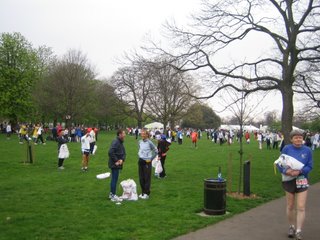
After our arrival there were a couple of important things to do: locate the toilets
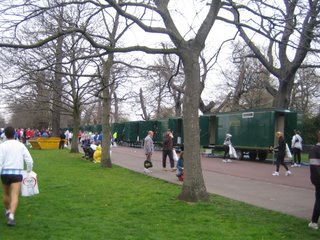
(start queueing for your last trip to the loo at least 30 minutes before the start of the race; you will then hopefully be back on time!), locate the tents where they hand out drinks
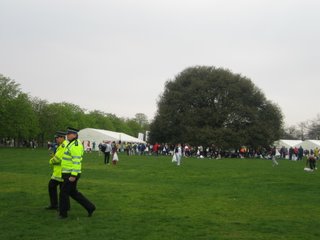
and finally locate the correct baggage vehicle (forgot to take a picture of that). Then reunite with the rest of the group and … wait. In the rain. For a long time. Pondering the “why?” question. Looking for the raison d’être of running a marathon. (A bit too late for that, really.) There I was, sitting on the grass in the rain wearing a bin liner (yes, a bin liner), waiting to be "allowed" to run 42 km/26 miles. "Madness" must be my middle name.

(Uli took two pictures of me in my designer bin liner, but I look like a big yellow toad on one of them. So it had to be censored. Thank you very much for sending me the pictures!)
The start is divided into marked time zones denoted by small numbers (1-9). In the next picture you can see a small sign on the right side with the number 5 on it.
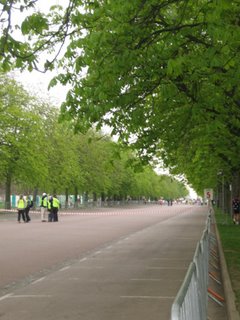
This is only the assembly road! The start line itself is at the other end of it behind the gates (you can see the red "4" on the left side of the picture):

When you register for the race, you have to fill in a form and estimated your running time. Based on this you are allocated one of the numbers 1-9 and you have to position yourself at the start according to this (the number is printed on your running number and it's difficult to cheat and start from a lower number). Mine was 8, because I had estimated that I would need at least 4 hours, 45 minutes.
After one last trip to the loo (queueing time approx. 25 minutes), I left my kit back at the baggage vehicle and went to look for start area No. 8.
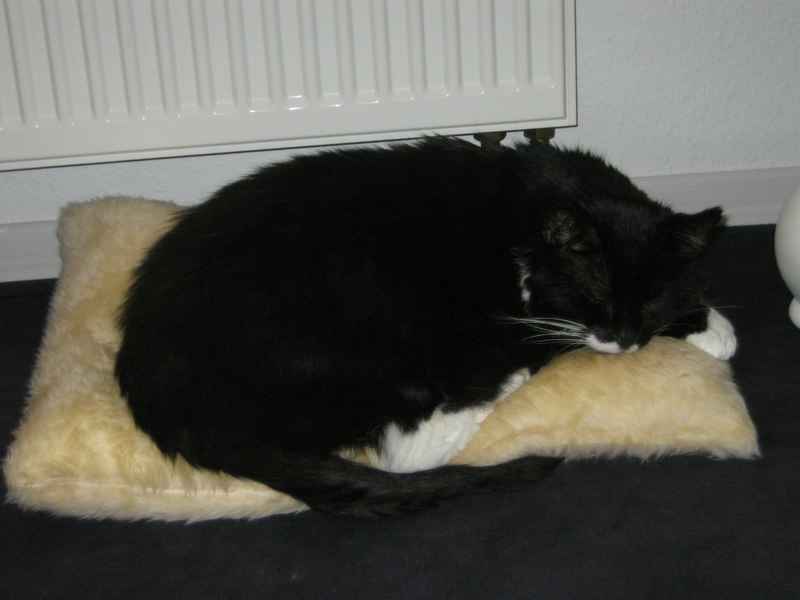

0 Comments:
Post a Comment
<< Home